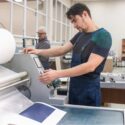Strategies for Scaling a Medical Device Company with Expert Advice from Kaisa Aierken
This post was last updated on April 9th, 2025
Find out the essential strategies for scaling a medical device company in a dynamic healthcare industry. Here you can know from industry expert Kaisa Aierken at Lifetime Medical Devices.

The medical device industry stands at the forefront of innovation, driving advancements in healthcare delivery and patient outcomes. With a global market projected to reach $612.7 billion by 2025, according to Grand View Research, the sector presents immense opportunities for growth and impact.
In this dynamic landscape, scaling is imperative for medical device companies to meet evolving market demands and establish a sustainable foothold in the industry. Scaling isn’t just about expanding operations but about orchestrating a strategic evolution that aligns with market needs while maintaining product quality, regulatory compliance, and customer satisfaction.
Kaisa Aierken, a leader at Lifetime Medical Devices, delves into the essential strategies that medical device companies can employ to navigate the complexities of scaling effectively. From leveraging technology and optimizing manufacturing processes to fostering strategic partnerships and embracing regulatory compliance, we aim to equip companies with actionable insights to drive their journey toward sustainable growth and long-term success.
Market Research and Validation
Market research serves as the cornerstone of strategic decision-making in the medical device industry. By meticulously analyzing market trends, competitors, and customer preferences, companies can pinpoint unmet needs and lucrative opportunities for innovation.
Through rigorous validation processes, including prototyping, testing, and soliciting feedback from key stakeholders, such as clinicians and end-users, companies can ensure the viability and relevance of their product ideas.
Validation is about gauging its potential market acceptance and impact on patient outcomes. By integrating market insights into the product development cycle, companies can tailor their offerings to address specific pain points and preferences within their target demographic. This iterative approach not only enhances product-market fit but also minimizes the risk of costly missteps during commercialization.
“Leveraging market research and validation methodologies enables medical device companies to refine their product features, enhance usability, and align with the evolving demands of the healthcare landscape,” says Kaisa Aierken. “In doing so, they can position themselves for sustained growth and competitive advantage in an increasingly dynamic market environment.”
Regulatory Compliance and Quality Assurance
In the medical device industry, adherence to regulatory standards and quality assurance protocols is paramount to product success and patient safety. Companies must navigate a complex web of regulations, including obtaining FDA approval in the United States, to bring their products to market.
By proactively understanding these requirements and integrating them into the development process from inception, companies can streamline the path to regulatory approval and mitigate potential delays or setbacks.
Quality assurance is a fundamental aspect of product development that ensures consistent performance and safety. Implementing robust quality management systems, including rigorous testing procedures and adherence to international quality standards such as ISO 13485, is essential.
These systems encompass documentation practices, risk management strategies, and regular compliance audits to maintain the highest standards of product integrity throughout the product lifecycle. By prioritizing regulatory compliance and quality assurance, medical device companies demonstrate their commitment to delivering safe, effective, and reliable products to the market.
Beyond meeting regulatory mandates, these practices instill confidence among stakeholders, foster trust with customers, and ultimately contribute to the long-term success and sustainability of the company.

Manufacturing and Supply Chain Optimization
Efficient manufacturing and supply chain management are critical components of scaling a medical device company. Strategic partnerships with reputable suppliers and manufacturers can streamline production processes, ensuring timely access to quality components and reducing production bottlenecks.
“By fostering collaborative relationships, companies can also leverage their partners’ expertise to drive innovation and enhance product quality,” notes Kaisa Aierken.
Implementing lean manufacturing principles is essential for maximizing efficiency and minimizing waste throughout the production cycle. By systematically identifying and eliminating non-value-added activities, companies can optimize resource utilization and improve overall productivity. This lean approach not only enhances cost-effectiveness but also enables companies to respond more flexibly to changing market demands.
Advanced technologies play a pivotal role in modernizing supply chain management practices. Automation streamlines repetitive tasks, reduces human error, and accelerates production cycles. Predictive analytics leverage data insights to forecast demand, optimize inventory levels, and mitigate supply chain disruptions. By embracing these technological advancements, medical device companies can proactively address challenges and enhance the resilience and agility of their supply chains.
Incorporating manufacturing and supply chain optimization strategies empowers companies to scale operations efficiently while maintaining product quality and reliability. By continuously refining processes and leveraging innovative technologies, companies can position themselves for sustained growth and competitiveness in the dynamic medical device landscape.
Sales and Marketing Strategies
Effective sales and marketing strategies are essential for scaling a medical device company and gaining market traction. Establishing a strong brand identity and fostering credibility within the medical community are foundational steps in building trust and attracting customers. This entails showcasing expertise, highlighting product differentiation, and emphasizing the value proposition to key stakeholders, including clinicians, hospital administrators, and patients.
Targeted marketing campaigns tailored to the needs and preferences of specific market segments can significantly enhance outreach and engagement. By leveraging various channels, such as digital marketing, industry conferences, and educational webinars, companies can effectively communicate their product benefits and generate leads among key decision-makers and end-users.
“Diversifying the sales approach is crucial for expanding market reach and maximizing revenue opportunities,” says Aierken.
This involves deploying a combination of direct sales efforts, strategic distributor partnerships, and leveraging online platforms to reach a broader audience. By nurturing a robust sales pipeline and fostering relationships throughout the sales cycle, companies can capitalize on opportunities and drive sustainable growth.
Incorporating comprehensive sales and marketing strategies enables medical device companies to elevate their market presence, generate demand, and accelerate business expansion. By aligning messaging with target audience needs and deploying agile sales tactics, companies can position themselves for success in an increasingly competitive landscape.
Looking ahead, the future of scaling in the medical device industry will be shaped by rapid technological advancements, evolving regulatory landscapes, and shifting market dynamics. Companies must remain agile and adaptable, continuously refining their strategies to stay ahead of the curve. This includes embracing emerging technologies, fostering collaborative partnerships, and proactively addressing emerging trends and customer needs.
As the healthcare ecosystem continues to evolve, the importance of innovation and patient-centricity will become increasingly pronounced. Companies that prioritize user experience, clinical efficacy, and value-based outcomes will be best positioned to thrive in an era defined by heightened scrutiny and demand for excellence.
By staying attuned to market trends, embracing innovation, and maintaining a relentless focus on quality and customer satisfaction, medical device companies can chart a course toward long-term success and impact in the ever-evolving healthcare landscape.
Recommended For You
Customer Service Analytics Provide Valuable Business Insights
Most Inside
Most Inside offers high-quality recommendations and valuable updates to enhance all aspects of your life, providing premium guidance and enriching experiences.




